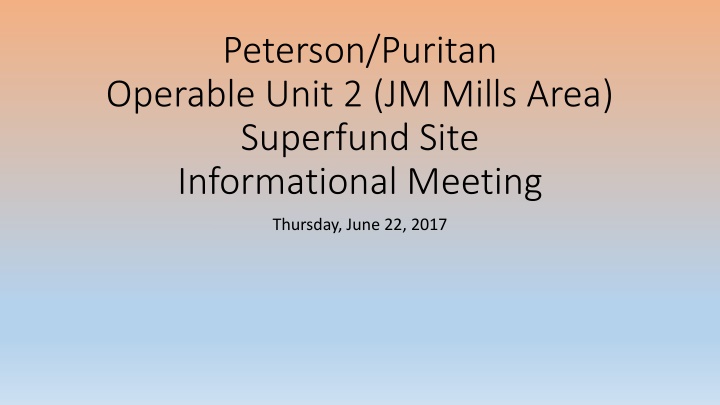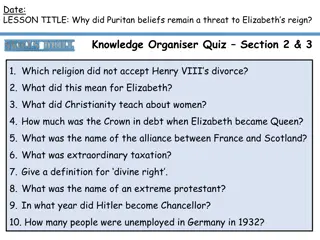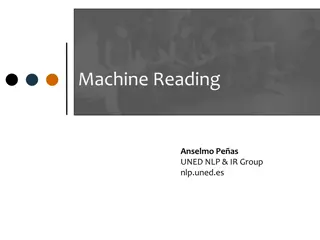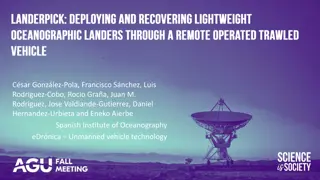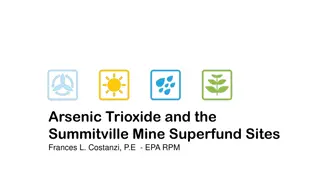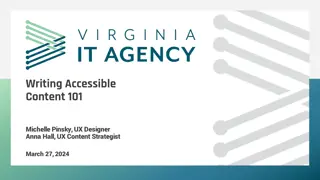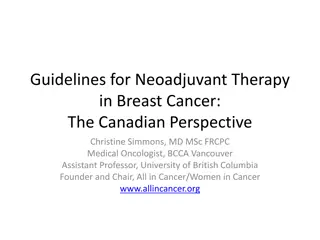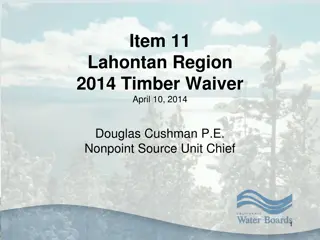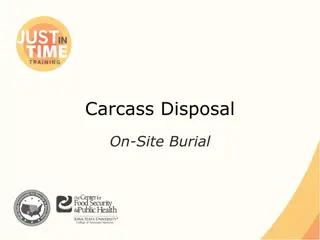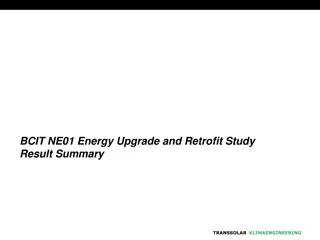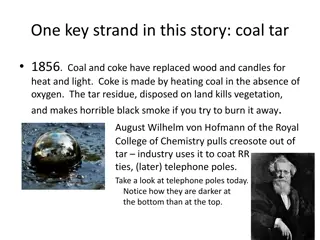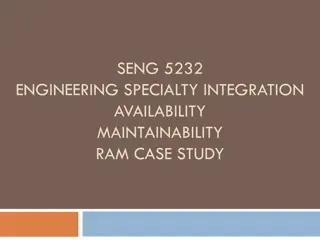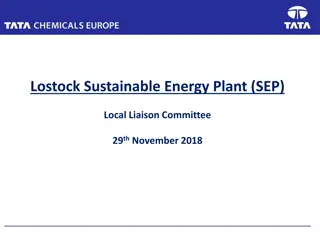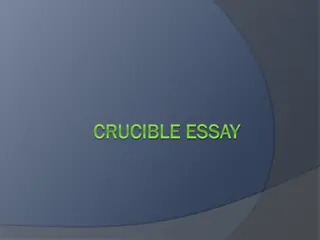Peterson/Puritan Operable Unit 2 Superfund Site Meeting
This informational meeting covers the Peterson/Puritan Operable Unit 2 (JM Mills Area) Superfund Site, detailing the settlement reached for cleanup design and implementation, the Superfund process steps, the Settlement Consent Decree, and the Design Investigation phase. The process timeline and key aspects of the remedial action are outlined, emphasizing the importance of thorough planning and approval processes.
Download Presentation

Please find below an Image/Link to download the presentation.
The content on the website is provided AS IS for your information and personal use only. It may not be sold, licensed, or shared on other websites without obtaining consent from the author.If you encounter any issues during the download, it is possible that the publisher has removed the file from their server.
You are allowed to download the files provided on this website for personal or commercial use, subject to the condition that they are used lawfully. All files are the property of their respective owners.
The content on the website is provided AS IS for your information and personal use only. It may not be sold, licensed, or shared on other websites without obtaining consent from the author.
E N D
Presentation Transcript
Peterson/Puritan Operable Unit 2 (JM Mills Area) Superfund Site Informational Meeting Thursday, June 22, 2017
Peterson/Puritan OU2 Where are we? Settlement reached to design and implement the cleanup (remedy) How did we get here? Where are we going? What to expect?
Superfund Process - 1 Remedial Investigation Evaluate contamination exposure and risk Feasibility Study. Evaluate Remedies to address risk and exposure Listing. Becoming a Superfund Site. [1983] Record of Decision (ROD). Selection of remedy. [2015]
Superfund Process 2 We are here Enforcement and Settlement. Commit to implement the remedy. 2017 Pre-design and design. Use the ROD and meet Site conditions. Remedy Construction (cleanup) Maintenance and monitoring Reuse, if any
The Peterson/Puritan OU2 Settlement Consent Decree (CD) a contract between government(s) and settling parties Scope of Work (SOW) attachment to the CD technical requirements/standards Road map/Guide for Design and Construction/Cleanup Lodging and Approval finalizing the settlement The CD/SOW and the Record of Decision (ROD) Together are the guide and roadmap for design and construction
Design Investigation (Pre-Design) and Design All with EPA and RIDEM Review and Approval Pre-Design sampling and data collection Fill data gaps volumes of waste/debris, extent of contamination, etc. Anything else needed for design Modeling Wetlands and floodplain On-site resources Physical access for construction purposes. Etc. Design Basis information and calculations that drawings and specifications are based on Drawings construction drawings blueprints Specifications describe project requirements for materials and actions
Conceptual Timeline Pre-Design < 1 year Design 2 years Remedial Action (Construction/Cleanup) 3 years Note: A great deal of work goes into each step of the process, including the submission for approval of many documents/reports. The quality of submittals, and efficiency of review, comment and approval(time) are the primary criteria resulting a shorter or longer schedule.
What residents can expect and potential impacts During pre-design and design sample/survey crews may be visible at times Impacts should be negligible regarding traffic or noise During construction Large construction project Construction noise Truck traffic at times transporting materials/equipment Dust suppression and air monitoring will be ongoing Change in Site appearance with vegetation removal and grading or excavation activities
Long Term Goals and Outcomes Remedial Action (Cleanup) Objectives Simplified Summary Full List in ROD Eliminate Exposure to waste and contaminants Human receptors Ecological receptors Prevent migration of contaminants From leaching Via erosion/overland flow To groundwater and off-site Control stormwater runoff Provide protection from 500yr flood Stability of structures Preventing migration of contaminants
Long Term Goals and Outcomes(continued) Reuse/Visioning EPA solicited public input during Proposed plan and reuse visioning in May 2016. Visioning process to be completed early in the design process. Desired activities expressed by residents during comments or visioning process include trails, public access and aesthetically pleasing landscaped site.
Long Term Goals and Outcomes(continued) Reuse opportunities Recreation Potential limiting factors Ownership/Access Dependent Compatibility with remedy Education displays associated with habitats, historical park and/or site history/cleanups Aesthetics Compatibility with adjacent uses/activities Blackstone Valley National Heritage Corridor and National Historical Park Recreation biking/walking, water activities Education - displays associated with river use, habitats, National Heritage Corridor and National Historical Park
Roles and Responsibilities Towns Cumberland and Lincoln Communication with the public Coordination with the EPA Advocacy for good public outcomes Often the most significant stakeholder Friends of the Blackstone Technical Assistance Grant (TAG) Recipient Blackstone River Valley National Heritage Corridor - consists of 25 cities and towns, from Providence and East Providence RI, up through the River s watershed to Worcester and Leicester, MA. These communities and the region are collectively a remarkably intact landscape that tells the story of the American Industrial Revolution. Textiles, machinery, agriculture farming to feed the workers, harnessing the river s power to drive the looms, etc., providing social services like schools, libraries and community centers National Historical Park - In 2014, the support for the National Heritage Corridor remained so strong that Congress established the Blackstone River Valley National Historical Park. The National Historical Park focusses on certain areas within the Corridor which do a particularly great job of conveying key stories . The Blackstone River, its tributaries and the Canal tell about water power and water systems for transportation. The Slater Mill National Historic Landmark tells the story of Sam Slater s first-ever water powered mill. The Blackstone River State Park (in RI, just upriver of the Peterson Puritan site) and the mill villages of Ashton, Slatersville, Hopedale and Whitinsville all tell particularly stories of the Historical Park.
Roles and Responsibilities (continued) EPA Agency responsible for oversight and approval of all design and construction activities. Coordinate with Performing parties Coordinate with communities Coordinate/inform other regulatory entities as necessary Coordinate public outreach Review and Approve documents and actions RIDEM Support Agency regarding oversight and approval Review and Approve documents and actions Support Agency for many of the same bullets as EPA.
Contacts EPA Don McElroy EPA Project Manager mcelroy.don@epa.gov 617-918-1326 Sarah White EPA Community Involvement Coordinator - white.sarah@epa.gov 617-918-1026 RIDEM Nicholas Noons RIDEM Project Manager Nicholas.noons@dem.ri.gov 401-222-2797 x7517 Town of Cumberland Josh O Neill Planner, Dept of Planning and Community Development 401-728-2400 x146
